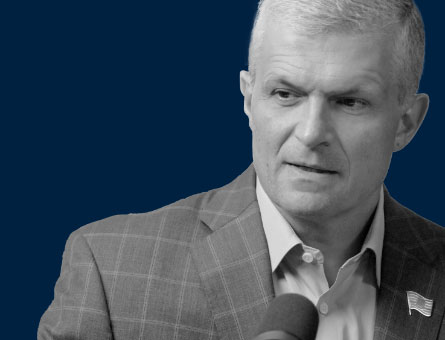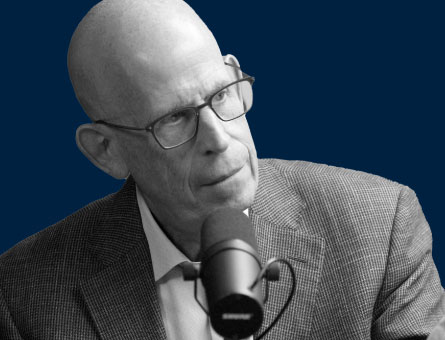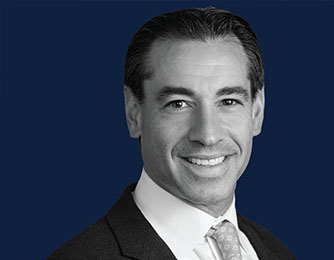Published August 29, 2023 | 3 min read
Key Points
- Deal numbers are coming back to pre-COVID levels, but dollar volumes remain down, as macroeconomic headwinds have been denting confidence.
- Markets are broadening, as we see deals in more industries, not just safe havens or tech stocks or fintech.
- As the Fed nears the end of its rate hike phase, sponsors are adjusting to the “new normal” for cost of capital.
- There’s been a boost in take-privates and a pipeline of pent-up demand and greater capital availability, which should bring growth in the next 18 months.
A quiet start to the year, with strong promise ahead
Vito Sperduto: So far this year, we’ve seen deal volumes shrink significantly across M&A and private equity. But we're seeing some green shoots. How have deals have evolved?
Harold Varah: 2021 was an aberration. Still, deals are down about half from a quarterly peak of Q4 in 2021. We've seen declines in dealmaking from sponsors in 4 of the last 6 quarters. We're now reaching a deal count around pre-COVID levels, but volumes are well down. Macroeconomic headwinds have been affecting confidence. One, with interest rates, and in sponsors’ ability to return capital to their LPs.
Vito Sperduto: The last four quarters are the lowest we've seen since COVID. Looking forward, this year could be flat to up 10%, from a volume perspective, globally, of announced deals. There’s an opportunity here.
What does the leveraged finance market look like for sponsors?
John Cokinos: Rates are at a 22-year high. But we're getting to stability. From a leveraged finance perspective, we’re as busy as we've been, underwriting deals. It's not just safe havens from year end. We're seeing deals in industrial, consumer, healthcare, and energy. It's not just Tech or FinTech; the markets are broadening.
The cost of capital has changed dramatically. Two years ago, we were looking to maximize leverage on deals. Now, we're trying to optimize capital structures. Underwriting has gone from maxing leverage to solving for a B2 outcome. Which means less leverage, stronger cash flow coverage, more equity. We're seeing valuations slowly coming towards our buyers. But that's the last shoe to drop.
How is the cost of capital affecting deals?
Larry Grafstein: We've had very healthy deal markets over past decades. But do you think we can still have a healthy deal market if the cost of capital stays much higher than it was the last 15 years?
John Cokinos: I do. Historically, the average yield for the high-yield market is 9%. We went down to 4.5% emerging from COVID. On the floating rate side, LIBOR, now SOFR, has ranged from 3 to 4%. Fed Fund rates are going to get to the real rate of return. That gets to 3 to 4%, where deals can still occur. With this reset, higher quality companies will be first to the deal market, and markets will be willing to buy or put more equity in play.
Harold Varah: Sponsors can operate in higher-rates environments. It's an incredibly resilient asset class. Remember, funds deployed during vulnerable times or even recessions, have typically outperformed funds put to play during bull markets. Recent uncertainty rang the death-knell for deals; rapidly rising interest rates with no end in sight. Now, those clouds are lifting.
How are sponsors adapting their approach to evaluating transactions?
Vito Sperduto: We often talk about the difference between how investment committees view a deal versus the partners introducing the transaction. In different cycles, we’ve seen investment committees reset their parameters.
Harold Varah: Sponsors are making sure that their transactions are absolutely aligned with how they define themselves to their limited partners.
I've also seen a tremendous uptick in take-privates. In H1 2023, 43 take-privates were completed. The highest count in the last 15 years. Given recent valuations, that shouldn't surprise anyone. What is surprising, is that 23 of the 43 were below $1billion. I think larger take-privates will happen soon. With the higher quality assets supported by the leveraged finance market.
Vito Sperduto: Looking at equity deployed in financial sponsor transactions, it’s now 57% for the average sponsor deal, up from a previous average of about 44%.
Larry Grafstein: I’d say the increasing confidence in equity markets helps sponsors find exits and helps dealmakers feel comfortable that even if they over-equitize, they will be able to recapitalize.
Sponsor-backed companies will be leaders of the IPO market reopening
Harold Varah: We must talk about IPOs. They're such an important means for sponsors to monetize. Especially their larger assets. We've had 22 IPOs, in 2022 and 2023 year-to-date. That compares to 202 IPOs in 2021. Overall, monetization of existing assets by sponsors is down almost two-thirds from a quarterly peak of 2021. Sponsors need a functioning IPO market, but it just hasn't been there. So, the exit backlog is growing rapidly. That's going to stall the redeployment of funds.
John Cokinos: That backlog could facilitate valuation change. If people need to monetize in their fundraising cycle with their LPs, they may need to concede on price.
Harold Varah: No one wants to monetize at an unattractive return. But the model doesn’t allow for infinite patience. We're going to see a reset in valuations and an expectation that they'll be the first ones to enter the IPO market. Look at the Dow in July and NASDAQ up about 35% year-to-date. The IPO asset class will have to join in.
Harold Varah: I think we’re going to see more sponsor-backed, public companies going private. Maybe by the same sponsor that took them public. There's nothing worse than being stuck, where your stock is traded near to or below the IPO price.
Vito Sperduto: Buyers are finding ways to get deals done. Especially if that results in less competition. If you're a seller in this market, you're more willing to accept certainty and speed versus price. I feel we're heading into a constructive market. Especially given a built-up pipeline of both buy- and sell-side demand, and capital availability. The question is, will it appear this year or next?



